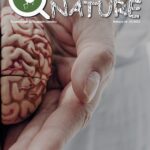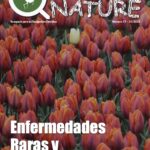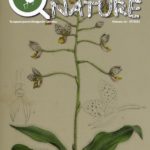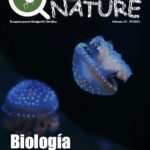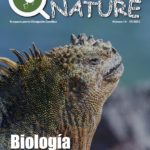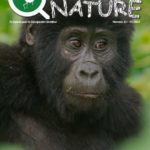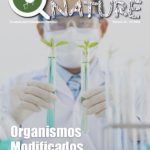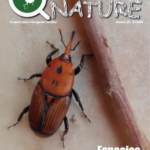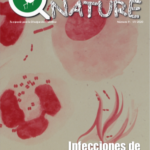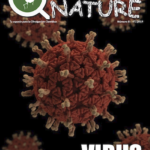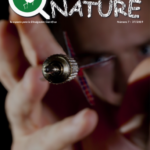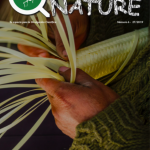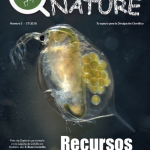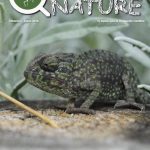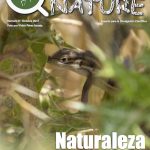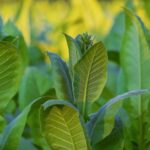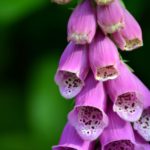Por qué el problema de los transgénicos es nuestro, y no de los transgénicos
- CHAMAS, A. (2000) Alimentos transgénicos. INVENIO. pp: 149-159
- GREEN PEACE. Transgénicos. GreenPeace.org. Consultado por última vez el 27 de julio 2020.
- BOLÍVAR ZAPATA, F.G. (coord.) (2017) Transgénicos. Ciudad de México.
- WAYNE, R.K. (2012) Evolutionary genomics of dog domestication. Mammalian Genome, 23 (1-2). pp: 3-18. | doi: 1007/s00335-011-9386-7
- BAESHEN, N. A., BAESHEN, M. N., SHEIKH, A., BORA, R. S., AHMED, M. M., RAMADAN, H. A., SAINI, K. S., & REDWAN, E. M. (2014). Cell factories for insulin production. Microbial cell factories, 13, 141 | https://doi.org/10.1186/s12934-014-0141-0
Organismos Modificados Genéticamente: una mirada introspectiva al pasado, presente y futuro
- Brody T. Nutritional Biochemistry. 2nd ed. San Diego: Academic Press; 1999. https://doi.org/10.1016/B978-0-12-134836-6.X5000-8
- Clarke, J.L., & Zhang, P. (2013). Plant biotechnology for food security and bioeconomy. Plant molecular biology, 83(1-2), 1-3. https://link.springer.com/content/pdf/10.1007/s11103-013-0097-1.pdf
- Clives, J. Situación mundial de la comercialización de cultivos biotecnológicos/MG en 2011. International Service for the Acquisition of Agri-biotech Applications (ISAAA). https://www.isaaa.org/resources/publications/briefs/43/executivesummary/pdf/Brief%2043%20-%20Executive%20Summary%20-%20Spanish.pdf
- Duan, N., Bai, Y., Sun, H., Wang, N., Ma, Y., Li, M., … & Wan, S. (2017). Genome re-sequencing reveals the history of apple and supports a two-stage model for fruit enlargement. Nature Communications, 8(1), 1-11. https://doi.org/10.1038/s41467-017-00336-7
- Field CJ, Johnson IR, Schley PD. Nutrients and their role in host resistance to infection. J Leukoc Biol. 2002; 71(1):16–32. https://doi.org/10.1189/jlb.71.1.16
- Hawkes, J.G. (1983). The diversity of crop plants. The diversity of crop plants. https://www.cabdirect.org/cabdirect/abstract/19850772843
- Jacobsen, S.E., Sørensen, M., Pedersen, S.M., & Weiner, J. (2013). Feeding the world: genetically modified crops versus agricultural biodiversity. Agronomy for sustainable development, 33(4), 651-662. https://doi.org/10.1007/s13593-013-0138-9
- Jayaraman, K., Jia, H. GM phobia spreads in South Asia. Nat Biotechnol 30, 1017–1018 (2012). https://doi.org/10.1038/nbt1112-1017a
- Khush, G.S. (2001). Green revolution: the way forward. Nature Reviews Genetics, 2(10), 815-822. https://doi.org/10.1038/35093585
- PMI. (2019). Most influential projects 1969-2019 (Biotech). https://mip.pmi.org/biotech-top-ten
- Underwood BA, Arthur P. The contribution of vitamin A to public health. FASEB J. 1996; 10(9):1040–1048. https://doi.org/10.1096/fasebj.10.9.8801165
- Vavilov, N. I., Vavylov, M. I., Vavílov, N. Í., & Dorofeev, V. F. (1992). Origin and geography of cultivated plants. Cambridge University Press. https://bit.ly/3kC3CXu
Infografía: Producción de Organismos Modificados Genéticamente en el mundo
- ISAAA Brief 54 (bit.ly/ISAAABrief54)
- ISAAA GM Approval Databasen (bit.ly/GMApprovalDatabase)
- ISAAA Pocket K No. 2 (bit.ly/PKNo2)
- ISAAA 2018. Global Status of Comemercialized Biotech/GM Crops in 2018. ISAAA Brief Nº 54. ISAAA: Ithaca, NY.
El Museo en casa: Selección artificial vs Edición genética
Edición de genoma en agricultura: Herramientas alternativas a la transgénesis
- Cheeseman, J. M. (2015). The evolution of halophytes, glycophytes and crops, and its implications for food security under saline conditions. New Phytologist, 206(2), 557-570.
- Clarke, J.L., & Zhang, P. (2013). Plant biotechnology for food security and bioeconomy. Plant molecular biology, 83(1-2), 1-3.
- Cong, L., Ran, F. A., Cox, D., Lin, S., Barretto, R., Habib, N., … & Zhang, F. (2013). Multiplex genome engineering using CRISPR/Cas systems. Science, 339(6121), 819-823.
- Colmenero-Flores, J. M., Arbona, V., Morillon, R., & Gómez-Cadenas, A. (2020). Salinity and water deficit. In The Genus Citrus (pp. 291-309). Woodhead Publishing.
- Colmenero-Flores, J. M., Franco-Navarro, J. D., Cubero-Font, P., Peinado-Torrubia, P., & Rosales, M. A. (2019). Chloride as a Beneficial Macronutrient in Higher Plants: New Roles and Regulation. International journal of molecular sciences, 20(19), 4686.
- Cubero-Font, P., Maierhofer, T., Jaslan, J., Rosales, M. A., Espartero, J., Díaz-Rueda, P., … & Hedrich, R. (2016). Silent S-type anion channel subunit SLAH1 gates SLAH3 open for chloride root-to-shoot translocation. Current Biology, 26(16), 2213-2220.
- Dove, A. Golden rice. Nat Biotechnol 18, 135 (2000). https://doi.org/10.1038/72531 Islam, T. (2019). CRISPR-Cas technology in modifying food crops.
- Jiang, W., Zhou, H., Bi, H., Fromm, M., Yang, B., & Weeks, D. P. (2013). Demonstration of CRISPR/Cas9/sgRNA-mediated targeted gene modification in Arabidopsis, tobacco, sorghum and rice. Nucleic acids research, 41(20), e188-e188.
- Jouanin, A., Gilissen, L. J., Schaart, J. G., Leigh, F. J., Cockram, J., Wallington, E. J., … & Visser, R. G. F. (2020). CRISPR/Cas9 Gene Editing of Gluten in Wheat to Reduce Gluten Content and Exposure—Reviewing Methods to Screen for Coeliac Safety. Frontiers in Nutrition, 7.
- Ross, J. G., Franzke, C. F., & Schuh, L. A. (1954). Studies on Colchicine‐Induced Variants in Sorghum 1. Agronomy Journal, 46(1), 10-15.
- Wen, Z., Tyerman, S. D., Dechorgnat, J., Ovchinnikova, E., Dhugga, K. S., & Kaiser, B. N. (2017). Maize NPF6 proteins are homologs of Arabidopsis CHL1 that are selective for both nitrate and chloride. The Plant Cell, 29(10), 2581-2596.
- Yilmaz, A., & Boydak, E. (2006). The Effects of Cobalt-60 Applications on Yield and Yield Components of Cotton (Gossypium barbadense L.). Pakistan Journal of Biological Sciences, 9(15), 2761-2769.
Análisis de los loci de rasgos cuantitativos como alternativa convencional a los organismos transgénicos en el estudio de genes y rasgos de resistencia en plantas
- Albert, E., Segura, V., Gricourt, J et al. (2016). Association mapping reveals the genetic architecture of tomato response to water deficit: focus on major fruit quality traits. Journal of experimental botany, 67(22), 6413-6430.
- Bouain, N., Korte, A., Satbhai, S. B., et al. (2019). Systems genomics approaches provide new insights into Arabidopsis thaliana root growth regulation under combinatorial mineral nutrient limitation. PLoS genetics, 15(11)
- Chitwood, D.H., Kumar, R., Headland, L.R., et al. (2013). A quantitative genetic basis for leaf morphology in a set of precisely defined tomato introgression lines. Plant Cell, ;25(7), 2465-2481. doi:10.1105/tpc.113.112391
- Diouf, L., Derivot, F., Bitton, L., et al. (2018). Water deficit and salinity stress reveal many specific QTL for plant growth and fruit quality traits in tomato. Frontiers in Plant Science, 9, 279.
- Fernandez-Pozo, N., Menda, N., Edwards, J.D., et al. (2015). The Sol Genomics Network (SGN) from genotype to phenotype to breeding. Nucleic Acids Research, 43 (Database issue):D1036-41
- Gupta, P.K., Balyan, H.S., Gahlaut, V. (2017). QTL Analysis for Drought Tolerance in Wheat: Present Status and Future Possibilities. Agronomy, 7, 5.
- Kumar, A., Jindal, S.K., Dhaliwal, M.S. et al. (2019). Gene pyramiding for elite tomato genotypes against ToLCV (Begomovirus spp.), late blight (Phytophthora infestans) and RKN (Meloidogyne spp.) for northern India farmers. Physiology and Molecular Biology of Plants, 25, 1197–1209. https://doi.org/10.1007/s12298-019-00700-5
- Togninalli, M., Seren, Ü., Meng, D., et al. (2018). The AraGWAS Catalog: a curated and standardized Arabidopsis thaliana GWAS catalog. Nucleic acids research, 46(D1), D1150-D1156.
- Wen, J., Jiang, F., Weng, Y., et al. (2019) Identification of heat-tolerance QTLs and high-temperature stress-responsive genes through conventional QTL mapping, QTL-seq and RNA-seq in tomato. BMC Plant Biology, 19, 398. https://doi.org/10.1186/s12870-019-2008-3
- Xu, J., Driedonks, N., Rutten, M. J., Vriezen, W. H., et al. (2017). Mapping quantitative trait loci for heat tolerance of reproductive traits in tomato (Solanum lycopersicum). Molecular Breeding, 37(5), 58.
PreguntasHN ¿Existen los tomates morados?
- Butelli, E., Titta, L., Giorgio, M., Mock, H. P., Matros, A., Peterek, S., & Martin, C. (2008). Enrichment of tomato fruit with health-promoting anthocyanins by expression of select transcription factors. Nature biotechnology, 26(11), 1301-1308.
- Campestrini, L. H., Melo, P. S., Peres, L. E., Calhelha, R. C., Ferreira, I. C., & Alencar, S. M. (2019). A new variety of purple tomato as a rich source of bioactive carotenoids and its potential health benefits. Heliyon, 5(11), e02831.
- Colanero, S., Perata, P., & Gonzali, S. (2020). What’s behind purple tomatoes? Insight into the mechanisms of anthocyanin synthesis in tomato fruits. Plant Physiology, 182(4), 1841-1853.
- Li, H., Deng, Z., Liu, R., Young, J. C., Zhu, H., Loewen, S., & Tsao, R. (2011). Characterization of phytochemicals and antioxidant activities of a purple tomato (Solanum lycopersicum L.). Journal of agricultural and food chemistry, 59(21), 11803-11811.
- Ooe, E., Ogawa, K., Horiuchi, T., Tada, H., Murase, H., Tsuruma, K., & Hara, H. (2016). Analysis and characterization of anthocyanins and carotenoids in Japanese blue tomato. Bioscience, biotechnology, and biochemistry, 80(2), 341-349.
- Gonzali, S., Mazzucato, A., & Perata, P. (2009). Purple as a tomato: towards high anthocyanin tomatoes. Trends in plant science, 14(5), 237-241.
Un día más para el futuro
- Organización Mundial de la Salud (OMS). https://www.who.int/topics/vaccines/es/ (Consultado el 16/07/2020)
- López, Marta, “Vacunas de nueva generación”, Genoma España, Sep 2004. https://www.chilebio.cl/wp-content/uploads/2015/09/Vacunas-de-nueva-generaci%C3%B3n.pdf
- Martínez González, Luzmila, “Producción de una vacuna comestible en sistemas vegetales contra el virus sincicial respiratorio”. Instituto Potosino de Investigación científica y tecnológica, A.C. (México). Enero 2009. https://repositorio.ipicyt.edu.mx/bitstream/handle/11627/2869/MartinezGonzalez.pdf?sequence=1&isAllowed=y
- Cebadera Miranda, María Elena, “Plantas modificadas genéticamente como vacunas comestibles: aspectos científicos y socioeconómicos”. Universidad Complutense de Madrid, facultad de farmacia, 2012. https://eprints.ucm.es/14705/1/T32828.pdf
- Miguel A. Gómez Lim. “La producción de vacunas y otros compuestos farmacéuticos en plantas transgénicas”. Revista de la Sociedad Química de México, Vol. 46, Núm. 3, mayo 2002. http://www.scielo.org.mx/pdf/rsqm/v46n3/v46n3a16.pdf
- Elizabeth Loza-Rubio y Miguel Ángel Gómez-Lim, “Producción de vacunas y otros compuestos biológicos en plantas transgénicas”. Instituto Nacional de Investigaciones Forestales, Agrícolas y Pecuarias (México). Marzo de 2006. https://www.redalyc.org/pdf/423/42337404.pdf
Mecanismos de defensa ornamentales
- Davies, M. K., & Mayne, A. J. (2001). Oleander poisoning. Archives of Disease in Childhood , 84(9), 55–57. https://doi.org/10.1136/adc.84.1.9
- Khan, I., Kant, C., Sanwaria, A., & Meena, L. (2010). Acute cardiac toxicity of Nerium oleander/indicum poisoning (Kaner) poisoning. Heart Views, 11(3), 115. https://doi.org/10.4103/1995-705x.76803
- Langford, S. D., & Boor, P. J. (1996, May 3). Oleander toxicity: An examination of human and animal toxic exposures. Toxicology, Vol. 109, pp. 1–13. https://doi.org/10.1016/0300-483X(95)03296-R
- Pérez-Alonso, N., Wilken, D., Gerth, A., Jähn, A., Nitzsche, H. M., Kerns, G., … Jiménez, E. (2009). Cardiotonic glycosides from biomass of Digitalis purpurea L. cultured in temporary immersion systems. Plant Cell, Tissue and Organ Culture, 99(2), 151–156. https://doi.org/10.1007/s11240-009-9587-x
- Van Baalen, J., & Prins, E. G. M. (1983). Growth and reproduction of Digitalis purpurea in different stages of succession. Oecologia, 58(1), 84–91. https://doi.org/10.1007/BF00384546
La humanidad necesita la mejora genética
- AGBIOS (Agriculture and Biotechnology Strategies). (2004). GMO Database. http://www.agbios.com/dbase.php
- Ahmed, I. (2012). Killer seeds: the devastating impacts of Monsanto’s genetically modified seeds in India. Global Research. Accessed: 12 Jan 2012. https://bit.ly/31Q0e2F
- Briggs, F.N., & Knowles, P.F. (1967). Introduction to plant breeding. Reinhold Publ. Crop New York.
- Brookes, G. (2002). The farm level impact of using Bt maize in Spain (p. 23). Canterbury, UK: Brookes West. International Service for the Acquisition of Agri biotech Applications (ISAAA). https://bit.ly/3iCN2F6
- Carson, R. (40th edition, 2008). Silent Spring, First Mariner Books (1962). ISBN-13: 978-0618249060.
- Clarke, J.L., & Zhang, P. (2013). Plant biotechnology for food security and bioeconomy. Plant molecular biology, 83(1-2), 1-3. https://doi.org/10.1016/S0168- 9525(01)02237-5
- Clives, J. Situación mundial de la comercialización de cultivos biotecnológicos/MG en 2011. International Service for the Acquisition of Agri-biotech Applications (ISAAA). https://bit.ly/2FgpyqS
- Cubero, J.I. (2003). Introducción a la Mejora Genética Vegetal. 2ª Ed. Mundi-Prensa. ISBN 978-84-8476-655-1.
- De Maagd, R.A.; Bravo, A. y Crickmore, N. (2001). How Bacillus thuringiensis has evolved specific toxins to colonize the insect world. Trends Genet., 17: 193-199. https://doi.org/10.1016/S0168-9525(01)02237-5
- Fernández-Chapa, D., Ramírez-Villalobos, J., & Galán-Wong, L. (2019). Toxic Potential of Bacillus thuringiensis: An Overview. In Protecting Rice Grains in the Post-Genomic Era. IntechOpen. http://dx.doi.org/10.5772/intechopen.85756
- Funke, T., Han, H., Healy-Fried, M.L., Fischer, M., & Schönbrunn, E. (2006). Molecular basis for the herbicide resistance of Roundup Ready crops. Proceedings of the National Academy of Sciences, 103(35), 13010-13015. https://doi.org/10.1073/pnas.0603638103
- Griffitts, J.S.; Haslam, S.M.; Yang, T.; Garczynski, S.F.; Mulloy, B.; Morris, H.; Cremer, P.S.; Dell, A.; Adang, M.J. y Aroian, R.V. 2005. Glycolipids as receptors for Bacillus thuringiensis crystal toxin. Science 307: 922-925. https://doi.org/10.1126/science.1104444
- Heck, G.R., Armstrong, C.L., Astwood, J.D., Behr, C.F., Bookout, J.T., Brown, S.M., … & You, J. (2005). Development and characterization of a CP4 EPSPS-based, glyphosate-tolerant corn event. Crop science, 45(1), 329-339. https://doi.org/10.2135/cropsci2005.0329
- Herrera-Estrella, L., & Trujillo, M.M. (2007). Plantas transgénicas. Fundamentos y casos exitosos de la biotecnología moderna, 167-193. ISBN 978-970-640-352- 0 https://bit.ly/3fYc8wz
- Invitrogen User Manual, C. (2003). Gateway® Technology. A universal technology to clone DNA sequences for functional analysis and expression in multiple systems. https://tools.thermofisher.com/content/sfs/manuals/gatewayman.pdf
- Jacobsen, S.E., Sørensen, M., Pedersen, S.M., & Weiner, J. (2013). Feeding the world: genetically modified crops versus agricultural biodiversity. Agronomy for sustainable development, 33(4), 651-662. https://doi.org/10.1007/s13593-013- 0138-9
- Jaganathan, D., Ramasamy, K., Sellamuthu, G., Jayabalan, S., & Venkataraman, G. (2018). CRISPR for crop improvement: an update review. Frontiers in plant science, 9, 985. https://doi.org/10.3389/fpls.2018.00985
- Katzen, F. (2007). Gateway® recombinational cloning: a biological operating system. Expert opinion on drug discovery, 2(4), 571-589. https://doi.org/10.1517/17460441.2.4.571
- Khush, G.S. (2001). Green revolution: the way forward. Nature Reviews Genetics, 2(10), 815-822. https://doi.org/10.1038/35093585
- Lacadena, J.R. (1988). Genética general. Editorial AGESA.
- Larcher, W. (1995). Physiological Plant Ecology. Ecophysiology and Physiology of Functional Groups. 3rd. ed. ISBN 978-3-540-43516-7.
- Liang, X., Peng, L., Baek, C. H., & Katzen, F. (2013). Single step BP/LR combined Gateway reactions. BioTechniques, 55(5), 265-268. https://doi.org/10.2144/000114101
- Lino, C. A., Harper, J. C., Carney, J. P., & Timlin, J. A. (2018). Delivering CRISPR: a review of the challenges and approaches. Drug delivery, 25(1), 1234-1257. https://doi.org/10.1080/10717544.2018.1474964
- Musunuru, K. (2017). The hope and hype of CRISPR-Cas9 genome editing: a review. JAMA cardiology, 2(8), 914-919. https://doi.org/10.1001/jamacardio.2017.1713
- Scnnepf, H.E.; Crickmore, N.; Van Rie, J.; Lereclus, D.; Baum, J.; Feitelson, J.; Zeigler, D.R. y Dean, D.H. (1998). Bacillus thuringiensis and its pesticidal crystal proteins. Microbiol. Mol. Biol. Rev., 62: 775-806. https://doi.org/10.1128/MMBR.62.3.775-806.1998
- Sanchez-Monge y Parellada, E. (1974). Fitogenetica: mejora de plantas. Madrid: Instituto Nacional de Investigaciones Agrarias. ISBN 84-500-1087-X. Taiz, L., & Zeiger, E. (2002). Plant physiology. Sinauer Associates, Sunderland. https://doi.org/10.1093/aob/mcg079
